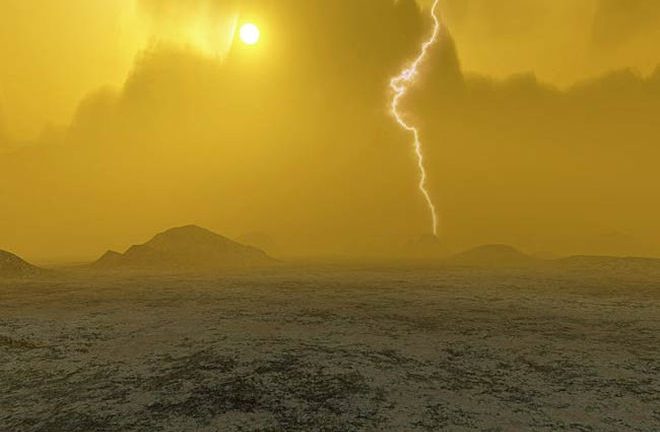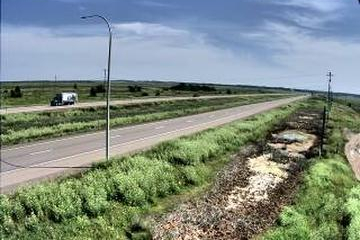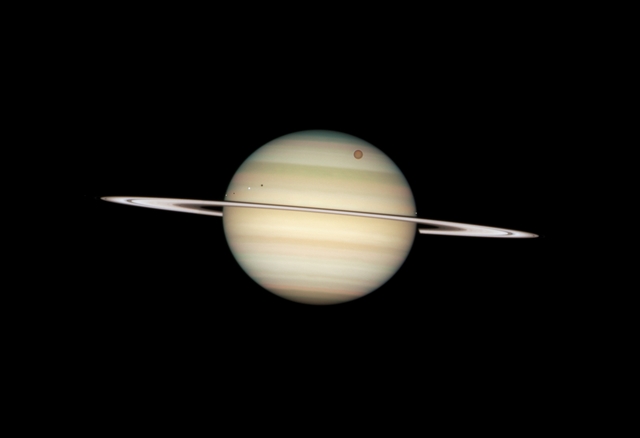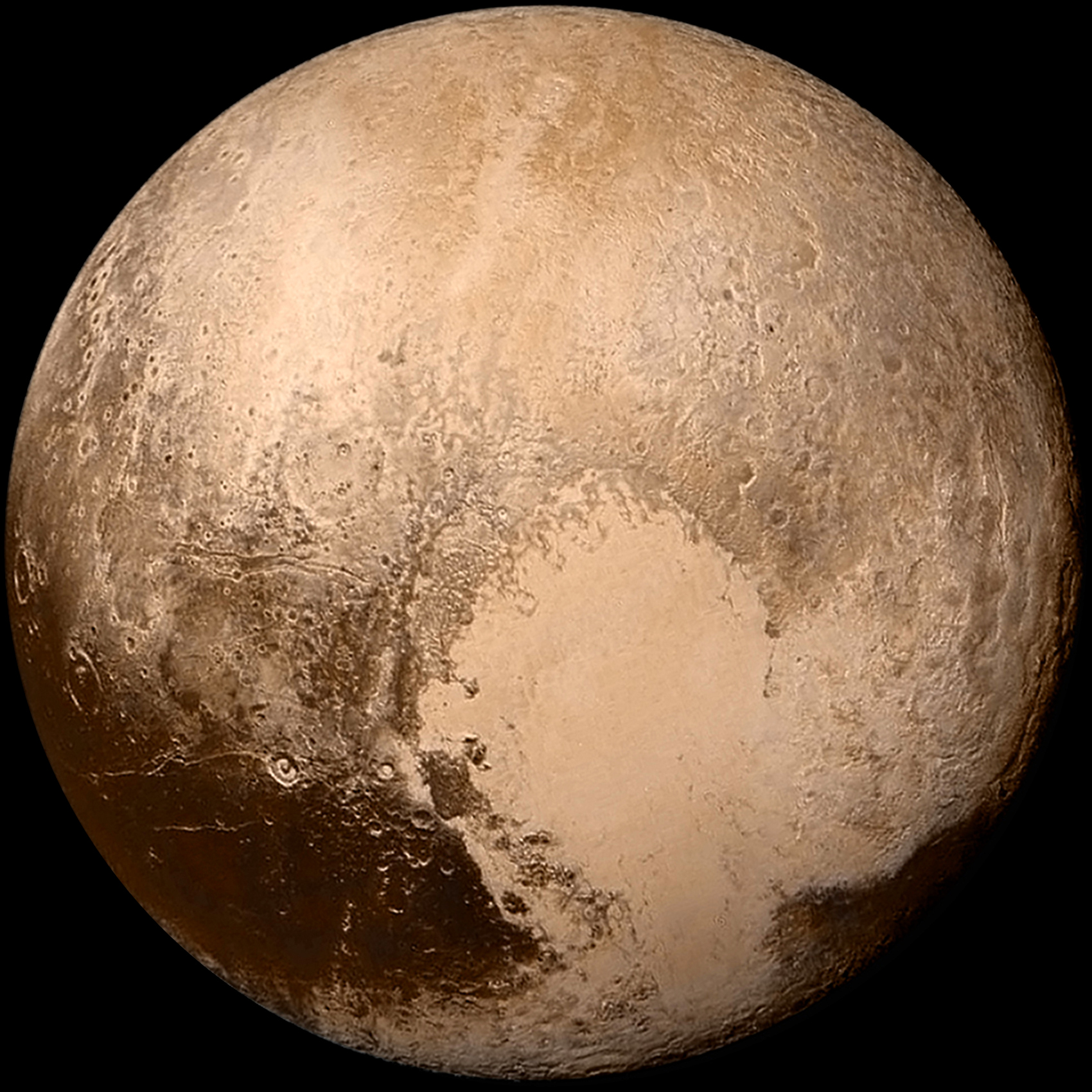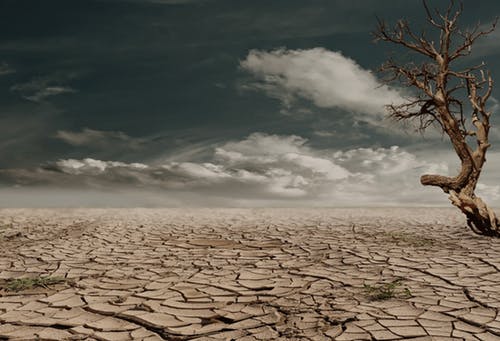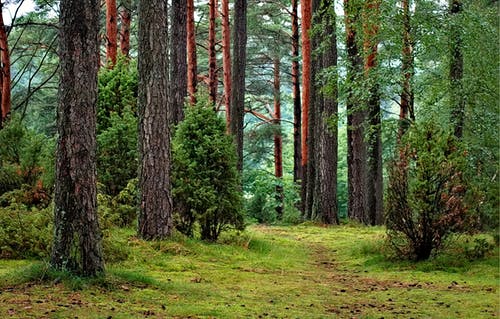Is Language a Virus?
After many years of reflection, I have come to the conclusion that language, the representational system we use to think and talk with, is not the golden egg I once thought it was.
I am not alone in thinking this.
Derek Bickerton wonders if language isn’t terminally dysfunctional because of the way it has led us to take control of the planet with little regard for the damage we were doing to the biosphere. Chomsky speculates that the reason why we have not heard from intelligent life elsewhere in the universe is on account of the fact that language is a lethal mutation, and no species capable of transmitting a signal has also managed to survive the side effects of being so smart.
Their pessimism is not surprising. The incompatibility between economic growth and a habitable climate indicates a deep mismatch between ideology and reality that is unlikely to be fixed any time soon. Despite plenty of evidence to the contrary how much things have changed everywhere else, the sway of ancient texts over peoples’ behaviour in some parts of the world, especially with respect to the treatment of women, shows how a few words can be used to crush the reality of living suffering beings.
With respect to global warming, the likelihood that a malfunctioning gene or lethal mutation is leading us to commit suicide as a species seems small since there was not a stable environment across all populations, cultures, and languages in which such a bad gene could have adapted in the first place. But biological agents are another matter. If an alien power wished to invade human consciousness so that it could slowly destroy us (and take over the planet), a virus that led to our obsession with information might just do the trick.
Information is a byproduct of language, and language reduces the abundance of the world to abstraction so it can be better understood and controlled. For us to refuse the promise of mastery latent in information, we would have first had to refuse language, which is unlikely, since it is the representational system we use to think and talk with, and we would not be human if we did not talk. But when you look at what we have done to the planet over the last hundred and fifty years as information moved to the front row of management tools, you have to wonder. First factories, then locomotives, aircraft, nuclear weapons, deep water drilling, IT, big data. A new impunity with respect to nature came onstage when people realized that representation of the truth about something or someone could be just as powerful as the truth itself. Or that if no one actually looks at what you are doing, and is satisfied with a checkmark, not only can you accomplish more work you can cover more territory too. Never before has so much life been brought under human control. Never before has the abundance of life been crushed by so many symbols. It has been an information success story.
But there was a destructive potential in all those checkmarks that few saw or anticipated. Like a virus, once set in motion, language’s representational machine takes over and before we know it there are two worlds — a real one filled with sunlit rocks and water and singing birds, and a virtual one that shows us what to do with rocks and water and singing birds. That tells us how to exploit rocks and water and birds. That suggests a good price for them.
The virtual world is very persuasive. It sweeps you away into an attractive place where everything has been re-vamped so that its usefulness to humans is paramount. It also so overwhelms you with data, you can barely think for all the facts you do not want to know. However, the problem with information is not just the number of words. It is what the words do. Information kills perception. It turns reality into fodder. It virtualizes everything it touches. It is a form of engineering. That means that if we are not careful, it can bury the real world.
The irony of living in two worlds is that while humans did not create either one, we benefited from making sure that the one we need to survive is the one we buried!
Some even believe the real world does not exist.
The whole thing makes you wonder about the purpose of human life. If we are an experiment, but we are at risk of destroying ourselves because we buried the real world, maybe getting control over language is our biggest most daunting challenge?
However, if an alien power is responsible for infecting us with a virus, what is the point of even trying? Viruses kill their host cells.
Not always. Sometimes they can be contained, brought under control.
What language is, may be the most important question we do not yet have an answer to.
How Language Works
It is not easy to see how language works, but close study reveals that it is basically an abstracting tool that is used for communication, a symbolic system for transmitting objective information, the first and only one on the planet (Bickerton 1995, 59). Though it seems to be primarily, or even exclusively, a system of communication, it is not even primarily a system of communication. It is primarily a system of representation, a way to sort through and manipulate the abundance of sensational and intellectual material that comes at us day in and day out throughout our waking lives. It does this by seizing upon the essence of entities, be they cough drops, or marketing strategies, or activities like scrounging, devising a concept for it, then giving the concept a linguistic representation — a word (Bickerton 1990, 13).
The word may or may not have anything to do with the thing or behaviour it describes because language is arbitrary. Linguistic symbols lack any apparent connection to the objects they represent (Bickerton 1995, 19). Nevertheless, they are obliged to sort themselves around a deep-rooted analysis of nature determined by our species biology. This analysis uses binary branching and puts constraints on what can be predicated about what entities – what linguists call the predicability tree. It has never been altered and perhaps cannot be altered (Bickerton 1990, 50). (See illustration) (The tree is about qualities. A quality at the top can be predicated of any class beneath it A quality on the main stem can be predicated of any class beneath but no class above. A quality on a side branch can only be predicated of a class below.)
A more efficient filing system is hard to imagine (Bickerton 1990, 43).
But language does not just provide a map of the world. It provides itineraries too. Once there are enough concepts, they can be strung together like beads on a string. Noun-Verb. Noun-Noun-Verb-Verb. However, for sentences to be born, you need syntax. Argument structure must be mapped onto phrase structure, which means that who did what to whom must be integrated into the structure of Head, Complement, Specifier, the structure of all phrases. Like an internal slot-machine, syntax combines entities with behaviours, adverbs, adjectives and grammatical items to generate an unbounded array of hierarchically structured expressions (Chomsky). Where did we get syntax? Chomsky thinks each one of us is born with universal grammar, a set of rules which correctly predicts which combination of words forms a grammatical sentence i.e. makes sense. However, others have argued that language changes too quickly for there to be a genetic code buried in our brains, that usage flips around according to different cultural values and personal idiosyncrasies. The latest thinking is that some of syntax is innate and some of it is acquired (Bickerton, 2014, 274).
Language creates a map for us, not of what the world is, but what the world is like, that is, what it can be represented as in words or concepts. “We recreate the world in the image of language” (Bickerton 2014). It also lets us create sentences, and sentences do not just map, they do things — convey information, ask questions, express commands or exclamations, put forth scenarios. With sentences almost every type of relationship in life can be described.
Off-line Thinking
With sentences, a new type of thinking becomes possible – off-line thinking. An infinite number of actions and relations between actions can be mentally represented in the physical absence of those actions (Bickerton 1995, 96). First the brain got colonized by words and after a while, we began to string them together. A million or two years of stringing concepts together and the continued weaving and unweaving of connections between them ………if this, then that, led to the algorithms for syntax, the verbal formulae that allowed us to keep things straight and to think in ways that enhanced our survival. Thinking is basically concept linkage, putting concepts together so that they make sense, so that they make new concepts. Some thought is focused on immediate problems or else involves interaction with other speakers. But other thought takes place wholly within our own minds (wherever they are) and does not involve contact with others or the world around us, at any level. It is off-line, as it were, and ranges freely over space and time. We rehearse actions before we do them. We think up new ways to adapt the environment to ourselves. We construct elaborate plans for the future and remember events long after they have occurred. We theorize about the relations between one situation and another, one concept and another. It is this sort of abstract thinking that led us to build the pyramids, to invent mathematics, to write novels. It is thought freed from the here and now.
Judging by what they have done, there is no evidence that any other species thinks like this.
The Properties of Language
Language does not lend itself to visualization or conception, so just to realize that you are using a machine this complex when you speak or write takes a considerable amount of study and self-consciousness. It is “like a sheet of transparent glass through which every conceivable object in the world seems clearly visible to us. We find it hard to believe that if the sheet were removed, those objects and that world would no longer exist in the way we have come to know them” (Bickerton 1990, 5). Even the comparison with a piece of transparent glass is not quite accurate since the world language shows us is not a mirror- image of the real world but “a new parallel world constrained by laws of its own nature just as much as by the nature of the phenomena it represents” (Ibid, 46). Language has its own properties which are imposed on whatever material we decide to talk or write about, and these properties have an effect on the picture words create.
Subject-Predicate Distinction
For example, language artificially divides entities from their behaviour. Despite the fact that everything in the world around us is unified and all in one piece, you can only talk about it as if it were divided up into an agent and a behaviour e.g. the chair sits, the lady laughs. “If there is a behaviour, someone or something must perform it “(Ibid, 211). This means that, as far as we are concerned, everything in the world has an agent within it, an agent which acts. Despite the fact that the world we see with our eyes or hear with our ears is filled to the brim with beautiful objects, creatures and places that are not broken up, that are whole, they are not whole when we talk about them. However, by dividing entities from their behaviour it becomes easier for us to see how they work. It becomes easier to see cause and effect.
Exclusive Class Membership
Another thing language does is institute a regime of exclusive class membership. If you are an eight year old German Shepherd dog, you can only be a big dog or a female or a pet. You cannot also be a five year old Rottweiler or a puppy. For any entity there is a minimal class to which it can belong, but it cannot belong to any class other than one which is bigger than the minimal class. Human knowledge is organized in trees of ascending generality with bigger concepts lording it over smaller ones. This is extremely helpful for distinguishing between (and getting control over) the many different aspects
of reality that exist. If language represented everything in the world as just a slightly different version of everything else, if it were all just a blur, we would not know how to take advantage of the very real differences between other species or things, or to appreciate the importance of details, many of which are often critical. Language’s tight filing system prevents us from getting things mixed up.
Causal Primacy
Another thing language does is make our brains seek out the prime mover in every situation. Argument structure is universal. No matter what language we speak, each verb selects for a certain number of arguments or phrases referring to any participant involved in the action, state or event that the verb expresses. Some verbs take one argument, others take two and still others can handle three. There are also arguments related to time and place. In order for sentences to be made, argument structure is mapped onto phrase structure but it is not just slapped on. It has to be done according to a hierarchy of thematic roles and this hierarchy always gives primacy of place to Agent. The highest structural position in a tree is most commonly given to an agentive noun phrase (Bickerton 1990, 67) This may be the result of observation or it may be purely practical. But by identifying one factor as being paramount, it focuses our attention in one place and keeps us from being distracted by all the other things that are going on at the same time. Language likes to cast things into a single cause and effect relationship.
Displacement
Displacement is another of the design features of language. This is the big one because it lets us represent things that are not immediately present. We do not have to be right in front of the things we talk about. When you write or read, you are free to be anywhere on the globe because where you are physically does not even have to register on your brain if you do not want it to, or if you can afford the conveniences that now exist to avoid it. That’s because of displacement. It is because of displacement that language is symbolic, and it is because of symbolism that we are free to travel across space and time. In our heads. Unlimited symbolism is the Rubicon that separates us from other species. Using a series of links between concepts and links between links, we explore the world recreated by language, the virtual world where everything has been revamped so that its usefulness to humans is paramount. Interior Decorating. Trade Wars. Prison Systems. These phenomena are all topics of thought because of displacement, which allows us to contemplate and reflect on what we are doing. We can withdraw from where we are and consider alternative arrangements. We can go off-line, as it were. Not being obliged to react to stimuli all the time, we can think.
The Problem With Language
It seems like the perfect tool. So why then is it terminally dysfunctional? A lethal mutation? A virus? Language is the perfect servant in many ways. It abstracts information necessary for survival. It is invisible. It explains how the world works. It lets us talk to each other. It is totally devoted to our species. But when you go back and look at the properties of language more closely, several red flags show up.
Subject-Predicate Distinction
For example, the subject-predicate distinction. Language uses words and structures that
impose dualism on their subject matter. This is convenient because it makes it easier to see how things or species function as machines or instances of the laws of physics. It’s an engineering approach to reality that reveals exploitable potential, and is probably responsible for the efflorescence of tools that followed language’s emergence 150,000 years ago. With a machine like language showing us how things work, it is no wonder that technology is such a big part of our lives. As poets can attest, it is hard work to use language for anything else. But harnessing nature for human exploitation is risky. We are not the only inhabitants of the planet, and if we devote our time exclusively to making the earth a nicer place for us, we will probably make it uninhabitable for others, and what about all those other species on which we depend?
Causal Primacy
Another potential problem is causal primacy. If language makes our brains seek out the prime mover in every situation, where does that leave the rest of the crew? If everything is structured as a hierarchy, with one Agent on top, all the other species who made the Agent strong are subordinate to it. This is another angle on the anthropocentrism inherent in dualism. The place where the Agent thrived is subordinate too as well as smaller species who helped the Agent rise to the top. This kind of prioritizing around one factor is a rearrangement of reality that is potentially dangerous on a planet where nothing is black or white and everything depends on everything else. Why? Because it destroys the interconnectedness that fosters life.
Arbitrariness
A third red flag is language’s arbitrary relationship with reality. If I can talk or write about anything independently from where I am standing or sitting at the moment, that means I am not bound by the chairs and tables, the roads and trees of actual places. I am free to go wherever I want to go. I can travel across space and time. We are accustomed to lauding the benefits of having an imagination, because we like speculating about the future and being carried away by stories. But what about the things and people that are sitting right in front of us,? The laptops, children, tablecloths, that novelists and business leaders leave behind? Where are the trees and rocks and landscapes that supported developers as they fantasized? They didn’t just disappear, so where did they go?
This not to say that some writers don’t mention where they are in their writing or closely observe what is all around them as they put thoughts together. But realism is rare among writers (even more among talkers,) and it’s because language lets us fly away from where we are, to other places, other people, other realities. It lets us ignore what is close at hand.
MORE OMINOUS SIGNS
But do these red flags add up to language being terminally dysfunctional, or a virus, or a lethal mutation? What we decide to call language will depend on what the evidence suggests and the design of language is just one aspect of it that is suspicious. Another is the fact that 99.9% of language’s work is not even expressed. It is not externalized. It is internal and we are not conscious of what it is doing to us. We know a little bit about how it frames reality when we speak and write, but what does it do to us when we are not speaking, when we are just perceiving? Do the conceptions we hold dear influence what we think when we spot, for example, dozens of people standing at a bus stop? Or sitting in their cars waiting for the traffic light to change? Of course, they do, but how? How do the ideas in our heads shape the patterns we observe in the world around us? cf. Maria Konnikova’s Mastermind for a delightful analysis of what Sherlock Holmes calls his “brain attic” the place where he stores all the perceptions he has ever had and whose structure shapes the way he thinks about them.
Capitalism Increasingly Abstract
But it is not just what language is doing to us as individuals. The cumulative effect of billions of people using the same abstracting tool to manage their lives — what is that doing? Look at how language has affected the evolution of capitalism, our favourite economic system here in the West. Originally, (when the world was young!) the valorization process instituted by the capitalist economy was tied to the production of useful things. Investors hired working people to produce boots and shovels that were then sold in shops for money, the investor getting most of the profit but the workers at least extracted a wage. Over time, this exchange process has become increasingly more sublimated. Workers still produce boots and shovels (in some places). But in others, they earn a living by extracting value from the circulation of money e.g. banking, insurance, stock trading. Labor stopped being physical and became intellectual with thousands of people sitting at computers where they study flows of data in search of trends or else completing transactions which never once involve contact with physical things. Labor is linguistic. It is deterritorialized, i.e. separated from the land. Words are separated from their referents and money is separated from economic goods. This has the advantage of making it easier to transfer money from one place to another quickly, but it also makes the economy much more complex, too complex for most of us to understand, which means that those who do understand it and know how to manipulate it have an unfair advantage. The financialization of the economy is yet one more, some would say “violent,” instance of the abstracting force of language subjugating another part of life and intelligence. Christian Marazzi and Franco Berardi have written about the mental and physical takeover of work by symbols, and I strongly recommend their work.
Information Consumption
There is also the whole area of information consumption, how much data people consume at work and at home. What effect is reading and interpreting all these words and images having on human consciousness? Americans consumed 100,500 bits per day in 2009 with more than 3/4 of that on radio and TV. That’s 12 hours a day being mystified by words and images! A recent article in Maclean’s magazine says that Generation Z, the group of young people born after 1995 grew up on the internet and so have become accustomed to learning from a screen anywhere, anytime. The top third are better educated than previous generations. SAT and GMAT scores are up – and not surprisingly, they are eager to save the planet. But do they have the staying power, the intellectual determination, to define the real truth of our lives, the misbegotten chaos created by Anglo-American foreign policy since the Second World War and the impending ecosystem collapse, especially when the bottom third of their generation is dropping out of school? They will do the best they can. But is a stupefying challenge. The application of human-centered, linguistic models to the world, by a small number of humans, has had some nasty, unforeseen consequences.
We personally may not feel abstracted. But we have abstracted everyone else.
Large Questions
These are large questions. If we are going to get any control over the precarious situation we are in, I think we need to look at the machine that controls everything we do. The voice that prompts us to act in unrealistic ways, to hurt other people and other species. The program that has sent us down this dead-end path. I think we need to get control over what language does to us. I spoke at the beginning about the possibility that we are victims of a virus, and I hope I have convinced you that the design of language is very suspicious because it leads us to do things that are destroying the planet. I am not denying we do good things with language too. I am just saying the tool itself is devoted to our survival as a species no matter what the cost. If I were going to name one particular feature that has created the most havoc, I would say that unlimited symbolism was fateful because it encourages us to ignore the physical world on which we depend.
Comparison with Animal Communication
But wait a minute, how did that happen? Didn’t language evolve out of animal communication? Though anthropologists used to say that language was just a further development of animal communication systems, the consensus now, among the few linguists who think about it, is that language was a different path, that at some point in our development about 150,000 years ago we began to communicate with displaced reference, and that is what triggered the processes that eventually led to the “advanced” cognition we now enjoy. The invention of symbolic units gave our brains material unlike any they had experienced before and caused them to reorganize themselves around different principles.
The reason why linguists now discourage the search for links with animal communication systems is because they realize how different the two systems are. Animal communication is iconic. Many of its symbols are gradient and cannot be combined to yield additional meanings. They are discrete and bear no systematic relation to each other whereas language’s symbols are not gradient. They can be varied in a variety of ways and have subset, superset relations. They can be broken down into categories which can be broken down further. This is characteristic of representational systems because they are designed to represent objective information, not express emotions like welcome or alarm. This is not to say some animals do not practice displacement or communicate objective information. Look at bees. But as a rule, animals do not change the environment. They adapt slowly by genetic change whereas we adapt quickly. Animals don’t think the way we do – off-line.
From Where did Language Come?
So where did language come from if it is not an upgrade on what other animals do? That is the big question. I think it was an option delivered to us by unlimited symbolism. But then where did unlimited symbolism come from? Did someone invent it? Was it within the DNA of words? How did that happen? There are other black boxes on the planet driving scientists to pull out their hair, and we may have to wait for more analysis of language’s complexity and design to perceive the outlines of what it is. Language can be explained without resort to external agents. Bickerton has just done it. But how to explain its dysfunctionality is another matter.
The idea that it was sent here by an alien force intent upon our destruction is a joke, but it’s a joke with intent. Viruses are small infectious agents. They are invisible. They reproduce rapidly. There are a huge number of different kinds of viruses. They can be found everywhere. They lack key features like cell structure so they are not alive, but because they share other features of living organisms they can be described as organisms on the edge of life. Perhaps language is an organism on the edge of life?
In the meantime, the civilization we have constructed under language’s guidance, the niche we have made for ourselves, is deeply flawed and unsustainable. We’ve got failed economic policies, wars and racism coming up the wazoo, and we are sliding towards ecosystem disaster. There is plenty of blame to go around, and it boggles the mind how so many thieves think they are doing the right thing. If we were smart, we’d bring back the guillotine. But there may be no need to look for ulterior motives. The people and machines responsible for destroying what used to be the future are simply exploiting something that is as normal as breathing– the impunity to the environment (and others) that is built into language’s design. It lay waiting for us to really use it, and now that we have, it has proliferated like cancer having a field day on a broken soul.
Is there any way to get control over it? I think there is, but it involves the resurrection of something that has been buried ever since we started to read and write – direct perception. Where we really are is in the universe. It’s plenty big enough to control language, and if we just had a way to keep it constantly before us, no virus would have even a little leg to stand on.
Berardi, Franco (2012) The Uprising, Semiotexte, (Los Angeles)
Bickerton, Derek (1990) Language And Species, University of Chicago, (Chicago)
Bickerton, Derek (1995) Language And Human Behaviour, University of Washington Press (Seattle) Bickerton, Derek (2014) More Than Nature Needs, Harvard University Press (Cambridge)
Chomsky, Noam (2010) “Human Intelligence and the Environment,” http://www.chomsky.info
Kingston, Anne (2014) “Get ready for Generation Z,” Maclean’s, July 15, 2014
Konnikova, Maria (2013) Mastermind, Viking (New York)
Marrazi, Christian (2008) Capital And Language, Semiotexte (Los Angeles)



